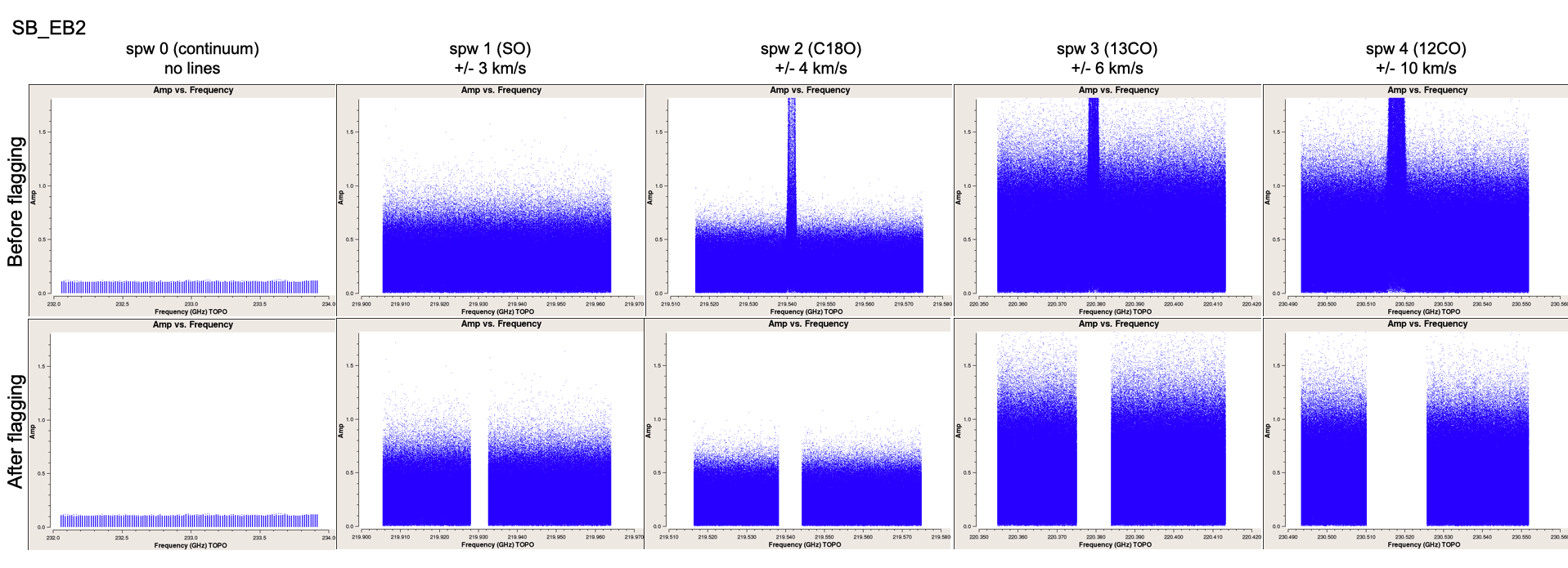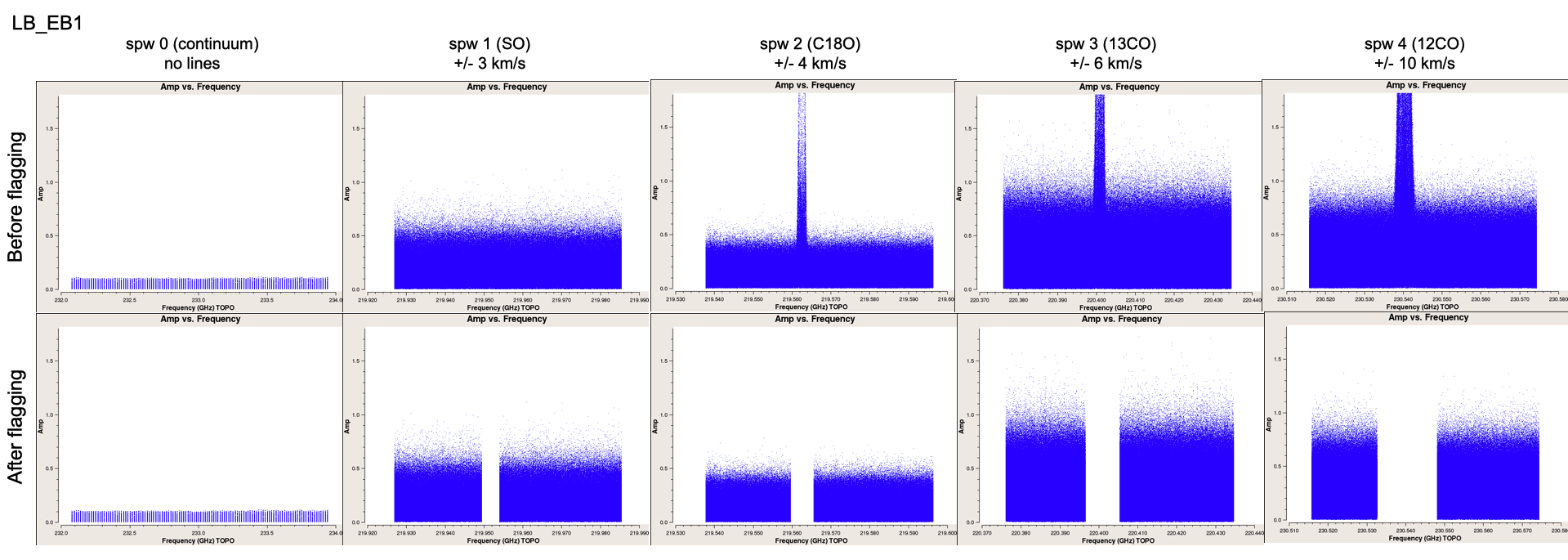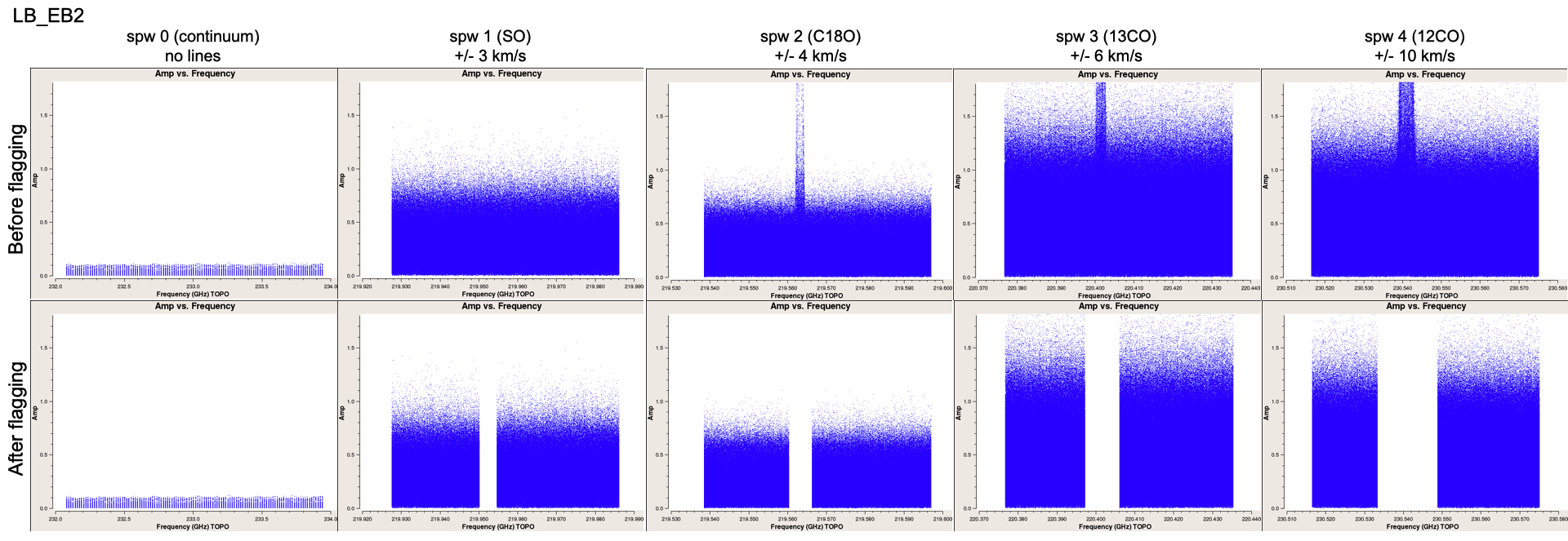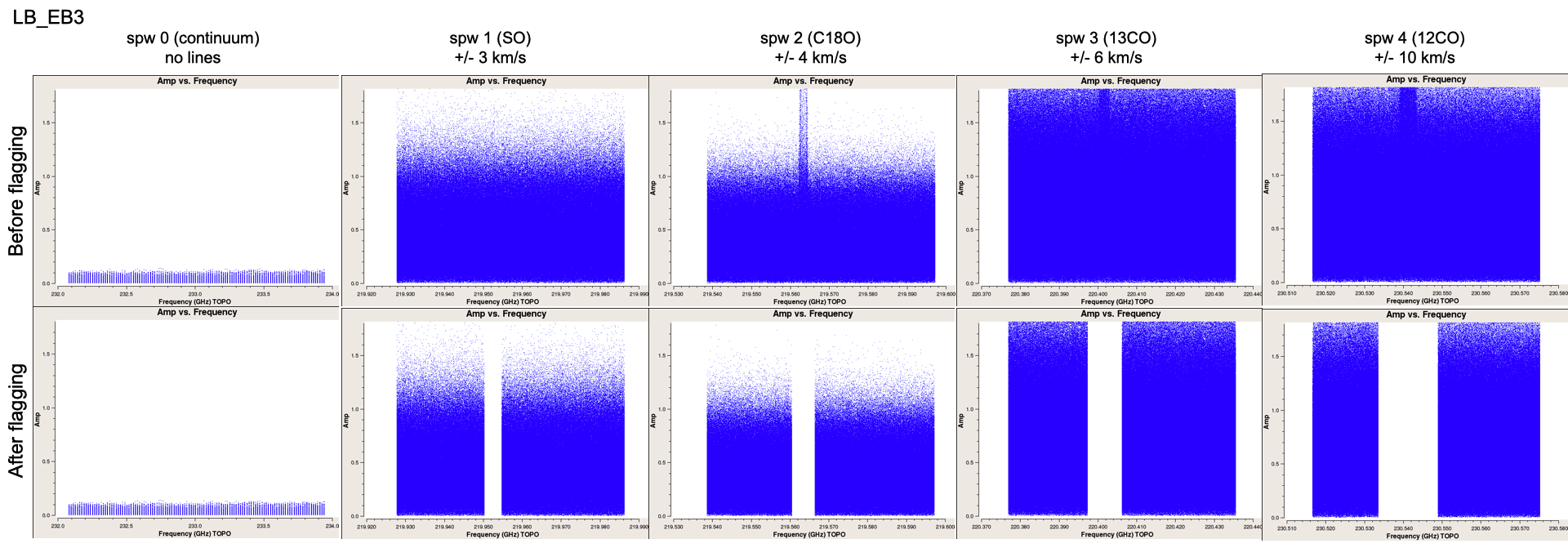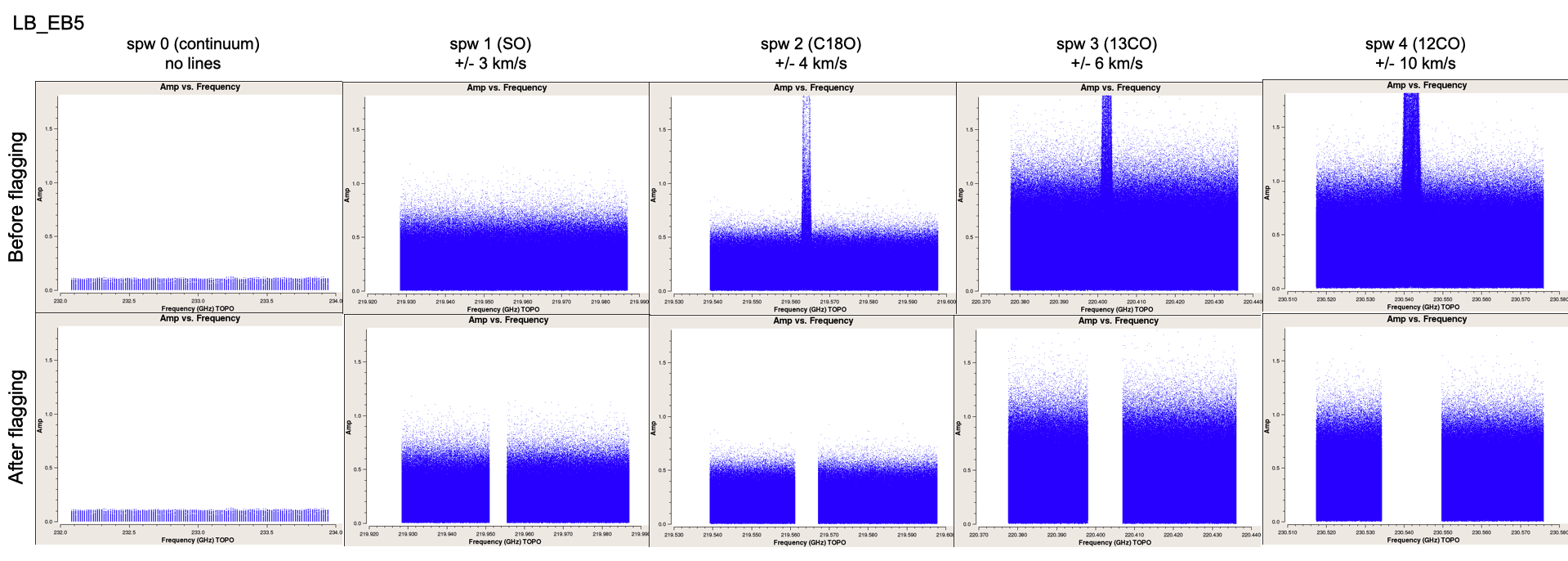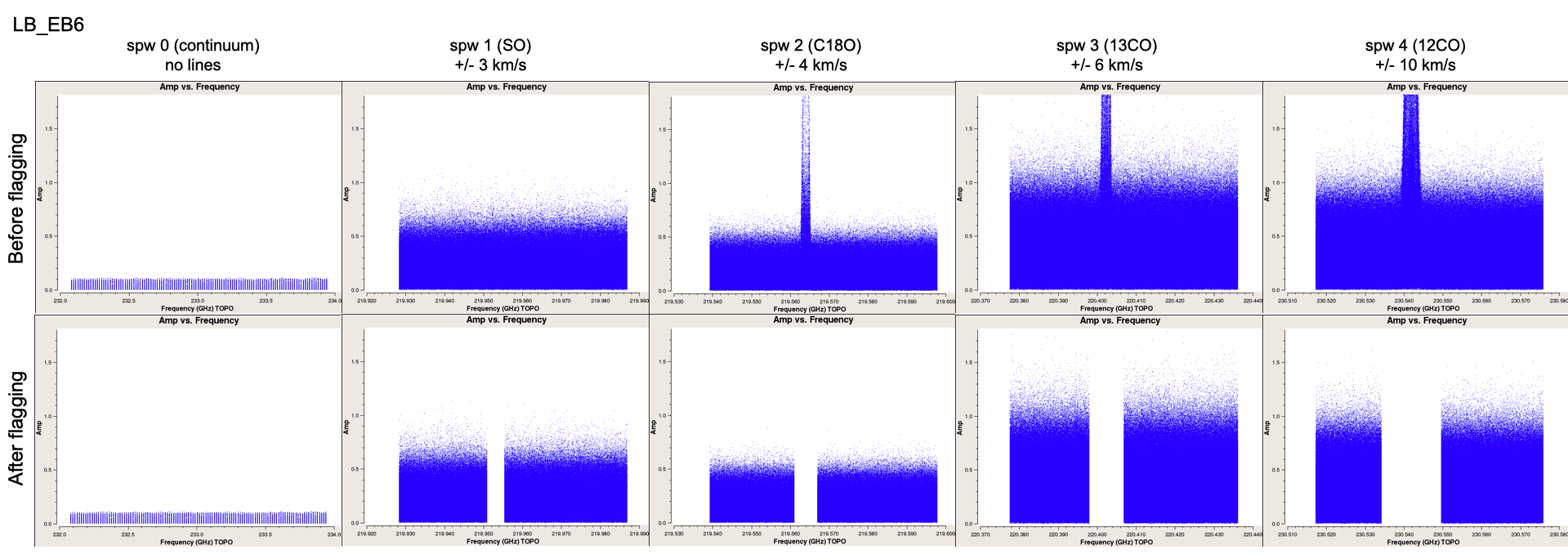Scripts for Step 1 - Prepare the continuum:
step1_prepare_continuum.py # main script
dictionary_data.py # loads data_dict
step1_utils.py # loads multiple functions
selfcal_utils.py # necessary for an initial round of selfcal at the end
Pseudo-continuum Measurement Sets#
Flagging channels with line emission#
We want to remove our spectral lines to create a continuum-only measurement set. To do that, we have to take into account Doppler shifting of the lines (in the TOPO frame) over the course of the year. The six TM1 execution blocks were observed between 2022-07-17 and 2022-07-22; the two TM2 execution blocks were observed on 2022-04-19 and 2022-05-15.
I used the DSHARP function get_flagchannels (reductions_utils.py) to identify which channels to flag in each spectral window, given the rest frequency of the spectral line, and a choice of velocity range.
flagchannels_string = get_flagchannels(ms_file = inputvis,
ms_dict = data_dict[EB],
velocity_range = data_dict[EB]['velocity_ranges'])
print('\nFor '+EB+', flagchannels_string = ', flagchannels_string)
velocity_ranges = np.array([np.array([ddisk.disk_dict['v_sys']-3., ddisk.disk_dict['v_sys']+3.]),
np.array([ddisk.disk_dict['v_sys']-4., ddisk.disk_dict['v_sys']+4.]),
np.array([ddisk.disk_dict['v_sys']-6., ddisk.disk_dict['v_sys']+6.]),
np.array([ddisk.disk_dict['v_sys']-10., ddisk.disk_dict['v_sys']+10.])])
In order to maximize the retained bandwidth (and achieve high SNR for per-SPW self calibration at a later step), we flagged channels in wider or narrower ranges depending on the targeted spectral line (e.g. \(\pm 10\) km/s from the \(^{12}\)CO \(J=2-1\) line center, and \(\pm 6\) km/s from the \(^{13}\)CO \(J=2-1\) line center). Note that our velocity ranges are narrower than the velocity ranges flagged by MAPS and DSHARP. We confirmed that they capture all tail emission with a buffer of \(\geq1\) km/s by imaging the cubes and visually inspecting the channels.
Spectral averaging#
We average the continuum SPWs into 250 MHz channels (8 bins), whereas the line SPWs we average into a single 58.594 MHz channel (equal to the SPW bandwidth).
avg_cont(msfile = inputvis,
outputvis = outputvis,
flagchannels = flagchannels_string,
contspws = data_dict[EB]['cont_spws'],
width_array = data_dict[EB]['width_array'],
datacolumn = 'data',
field = 'AB_Aur')
width_array = [8, 960, 960, 1920, 1920] # number of channels to average together
Visuals/results#
SB EB1#
In hindsight…
Plots like these (with plotms) can be a lot clearer with avgtime='1e8', avgscan=True and avgbaseline=True.




